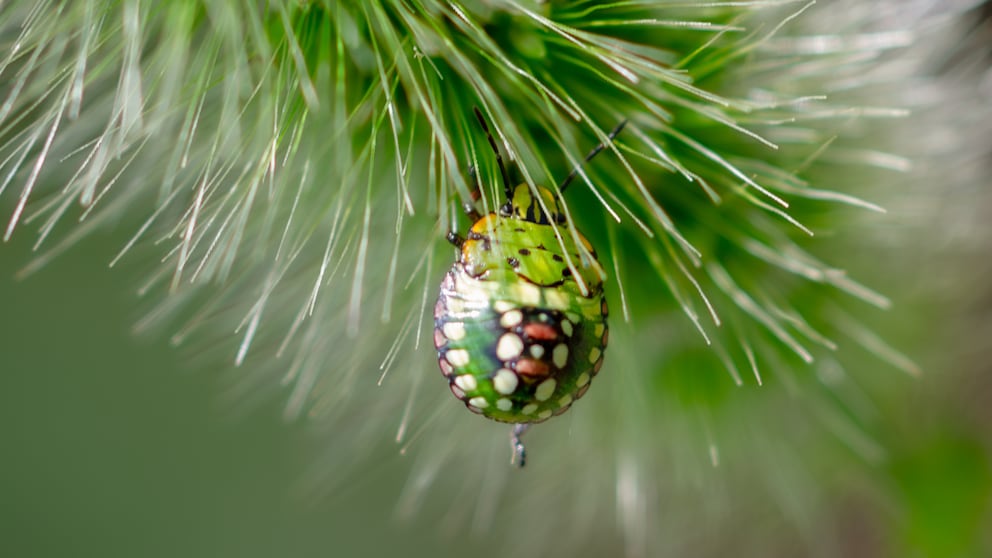January 27, 2025, 8:53 am | Read time: 3 minutes
From a distance, you might mistake Picasso shield bugs for little Easter eggs. But why are the insects so colorful, and what do they have to do with Picasso? PETBOOK author and biologist Saskia Schneider explains what the colorful bugs are all about.
Bugs generally do not enjoy a good reputation. But there is one species that is even popular with people who don’t like insects: the Picasso shield bug. Their colorful pattern is a source of admiration. Some people think they look like little Easter eggs. In fact, the pattern almost looks hand-painted.
But why do the insects have such a striking coloration? After all, they are easily recognizable to predators from afar. Or is this a warning? Are the bugs perhaps poisonous?
Not a Beetle, but a Bug
The Picasso shield bug is native to the tropics and subtropics of Africa and reaches sizes of around one centimeter. Its scientific name is Sphaerocoris annulus. In its native country, it is also known as “Zulu Hud Bug.” Occasionally, they are also known as Picasso beetles.1 Like all shield bugs, they have a greatly enlarged, curved shield, also known as a scutellum. It usually covers the entire abdomen. This makes it easy to confuse the bugs with beetles. 2
The base color of shield bugs is green. They have a colorful pattern of eleven spots on their shield. What is particularly striking is that the pattern does not form perfect lines. This makes it look as if the bug has been hand-painted, and many people wonder whether this insect is really real.
Why Is the Picasso Shield Bug So Colorful?
The colorful, abstract pattern on the dorsal shield of the bugs primarily serves as a warning. Many shield bugs have a striking coloration. Although they are not poisonous, when they feel disturbed, they release a rancid-smelling and foul-tasting secretion. Many of our native bugs do the same, which is why you should not pick them up.
It is also sometimes claimed that the pattern serves as camouflage and blends in with the surroundings. If you look at photographs of the insects, they often sit on colorful flowers. This can certainly lead to a camouflage effect. 3
What Does the Bug Have to Do with Picasso?
Although the colorful pattern of the bug is not primarily reminiscent of Picasso’s works of art, the name was probably chosen because of the painter’s fame. After all, Picasso is primarily associated with colorful works of art.

Biological puzzle Are zebras actually black- or white-striped?

Ocelot, Manul, Kodkod, … Hardly anyone knows these 16 wild cats

Silkworm moths and nocturnal moths Keeping moths as pets? The reason behind the trend
Not Everyone Likes the Picasso Shield Bug
But not everyone is happy about the colorful insects. Because, like many bugs, Picasso shield bugs feed on plant juices. To do this, they pierce stems with their long mouthparts and can cause damage to crops in their native habitat.
The subspecies Sphaerocoris annulus ocellatus, also known as the “avocado flower bug,” is mainly found on avocado plants. A large infestation can weaken the plant to such an extent that it no longer grows properly. Citrus plants, cotton, okra, and sunflowers are also said to be affected.4


